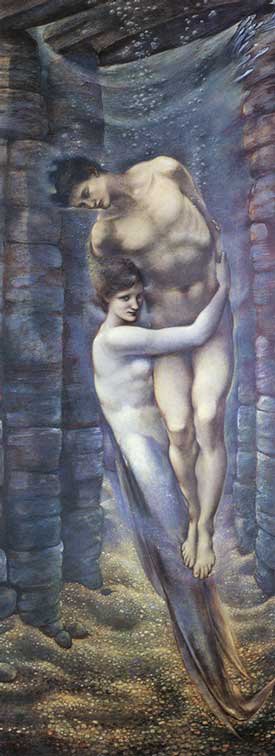More about
Scrambled Messages: The Telegraphic Imaginary 1857-1900

Between 1857 and 1866 the public's attention was caught by the drama of the repeated attempts to lay a submarine cable across the Atlantic for the transmission of telegraphic messages. Over subsequent decades, a range of technical constraints led to concerted scientific endeavour to overcome obstacles in the sending of messages electronically. This project draws on discussions of twenty-first century digital culture and its limit points to establish why it is that the scrambling of messages was as significant for Victorian culture at large as the sending of flawless messages. It is our hypothesis that pleasures and excitements produced by the new technology were productive of new cultural forms in literary writing and fine art. These cultural forms adopt at one and the same time the emotional repertoire proper to heedless, abstract technophilia and that associated with an uneasy recognition of recalcitrant materiality.
"the essence of technology is by no means anything technological" - Martin Heidegger, 'The Question Concerning Technology' (1949)
The enquiry moves between material objects and conceptual ideas. We ask what were the particular practices and sensations generated by telegraphic communication. We ask what was the range of British public commentary and graphic imagery produced in response to the drama and developing technology associated with the telegraph. At the centre of the project is the Wheatstone Collection of scientific papers and instruments held by KCL. Charles Wheatstone (1802-1875) was a pioneer in the technologies of the telegraph. The problems exercising inventors and technicians in the archive offer us sets of opposing terms with which to look into Victorian culture such as proximity/distance and conductivity/impedence.
What would compression, stretchiness or splicing, for instance, mean in the case of the novel or in the case of the short story? What would sequence, seriality or heat production mean in the case of mythological painting or landscape examples? We will approach the turn to the ornamental in late Victorian art asking whether it can be taken as evidence of a new logic of seriality predicated on the one-message-at-a time capability of the telegraph. Is the possibility of sequential encryption and decryption routinely adopted in telegraph-age literary and artistic culture? A focus on the associations and imaginings attendant on the telegraph will make it possible for us as scholars to acknowledge genre distinctions and attend to the specificities of different media and audiences but at the same time to develop interdisciplinary arguments of broad significance about Victorian culture.
The project team
We are an interdisciplinary group from fields as diverse as engineering, art history, English and archaeology.
Meet the Scrambled Messages team
What we do
We meet fortnightly to explore and discuss telegraphic imaginings in Victorian literature, engineering, and the arts (1857-1900).
Explore our project bibliography
Read our most recent thoughts on our blog. We hold frequent events to disseminate and share our work and are producing a selection of teaching resources for use in schools. Scrambled Messages has also funded the cataloguing and digitization of the Wheatstone collection, which is searchable here.
Groups we work with
We have links with a number of related projects
Diseases of Modern Life: Nineteenth-Century Perspectives
Constructing Scientific Communities: Citizen Science in the 19th and 21st Centuries
Making Waves: Oliver Lodge and the culture of Science, 1875-1940
Related Institutions
The Information Age Gallery @ The Science Museum
